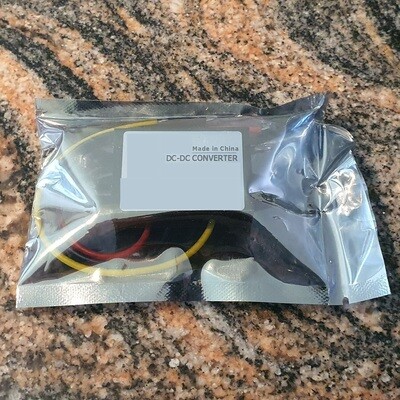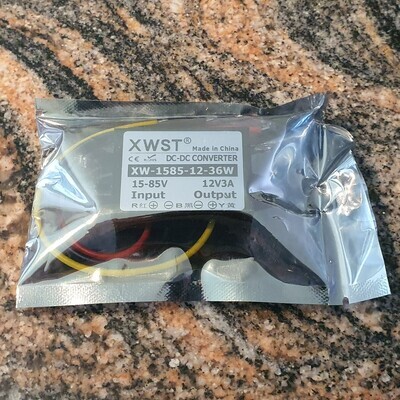Extensive online catalogue servicing new and existing Now Club members & trade/ABN | eSN2026#JP-CN | Group Ride Guide | On The Run Workshop |
Buck Converters
Image from The Lab at eSN showing the go-to's, including the NAMI "convertor" package label 12V 3A.
eSN stocks a select range of buck converters well suited for use in eScooters. The range accommodates:
- A range of input voltages, including some for 72V systems at full charge with regen.
- Choices of enclosures: plastic or metal, the later are more commercial/industrial designed for higher duty cycle at high current and / or demanding thermal environments. There metals are available in a small 1A unit and a few larger units that are considered "heavy" having large heatsink fins.
- Choices of voltage output: 5v USB, 5v flylead, 12 volt flylead. Some may have ACC line.
Bucks convert native scooter system voltage (e.g. 72v) from eScooter battery to a suitable low voltage to run 12v automotive components (such as lights, horns and other instrumentation).
Buck converters will draw a small amount of standby current, drawing down on eScooter battery even when not in use, although the draw isn't significant and can be eliminated if isolated in circuit with relay or other switching circuit.
Buck converters will supply a constant output (e.g. 12V) regardless of your eScooter battery level.
Buck converters are typically fitted to battery via XT series connectors (splitter cables), there are a few things to be mindful of with regard to choice of XT30 and XT60, with many modern "Smart BMS" isolating the XT30 when not charging. There is reliance on the BMS to prevent excessive standby draw down to low battery levels, although this may not apply to the charging port (XT30) so consider that in circuit design. Even in the most worst case scenario, you would need a near flat battery then have it stored for 3 months without charge while the buck converter (and/or attached equipment is running) to drain battery levels to inappropriate levels.
eSN Services can provide harnesses fabrication and/or fitting in the eScootNow workshop if required.
Most eScooter stock headlights run native system voltage, as native is more efficient and there is less voltage drop across the relatively thin mainline (harness that runs up the stem). Those headlights have an internal buck converter in the light fixture. Your typically factory stock "light box" that Kaabo refer to as wire collection board, NAMI converter will typically only have a load budget to sustain the factory stock lighting, for example, the NAMI Converter is rated 12v 3A according to the factory spare packaging. If the headlight is driven from the stock factory buck converter, you will likely need to supplement the stock buck with an auxiliary unit.
Best practice for headlights is to adopt wide voltage input light fixtures that support native system voltage. As there is already buck conversion to drive the LED emitters (~3V), it's best to have a single conversion of voltage. Using a buck converter for a 12V headlight will result in double conversion, and with conversion is loss. If you want efficiency, consider only wide voltage headlights. You will also be able to do more with thinner gauge wire at that voltage.
The Labs at eSN always has wide voltage fixtures on the shelf, having sampled around 20 units in recent years, there are a couple that are absolute corkers and quite a few that are absolute rubbish. For example, this 3-LED unit, also listed here. That one has been mentioned on several occasions by eScooter enthusiasts on social media. Input voltage is indeed 9-80V (despite listed as 12V 24V) and claims to be "12 watts". The yellow fog light is nice, as is the white light, but if you try and run both, the controller drops back to half luminance, so white (throw) + yellow (fog) is no brighter than white alone, in fact, there is less throw when you bring in the yellow. It has a pretty good directional lens, and the colour (with the yellow) is not too bad, but in general the options are pretty average. Most of the best headlights for eScooters will require external buck conversion, although there are new products starting to appear and opening the fixture to check the nameplate on the IC (buck converter on the PCB) is a good way to check if the fixture supports wide voltage - often they will only be labelled or marketed as low voltage (12v/24v). Ensure you are confident the fixture supports native system voltage before connecting to native system voltage, as if it is the incorrect voltage, and thus different resistance, you will short the circuit which will break a few things, and this potentially includes your investment.
Buck converters can be "switched" based on electric scooter power on/off state, so they are only activate when scooter is powered on. They can be switched in turn with factory light switch circuits, so when factory lights are turned on they will activate to supply to auxiliary lighting. Circuits can be designed to have them "switched" ON only when charging, preventing draw down on scooter battery whilst still having the convenience of a single port plug for *everything* onboard. Of course, you can have the old school manual switch, or no switching at all (always on).
eSN recommends using a small form factor 5mm relay (mechanical or newer solid state) as adopted by the immobiliser harnesses in the IoT GPS Tracker by eScootNow. Ensure you incorporate flyback protection in circuit design, this explained on the relay product page and is important to prevent premature failure of switching mechanisms and non-mechanical switching components. Many of the popular makes/models do not have appropriate flyback protection, resulting in premature failure of switching mechanisms (such as horn buttons, light switches etc).
If you are simply looking to provide 5V USB power, consider the USB Dashboard Power Outlet which has built in buck converter direct (single conversion) and this supports Qualcomm Quick Charge 3.0 (QC 3.0).
Refine by
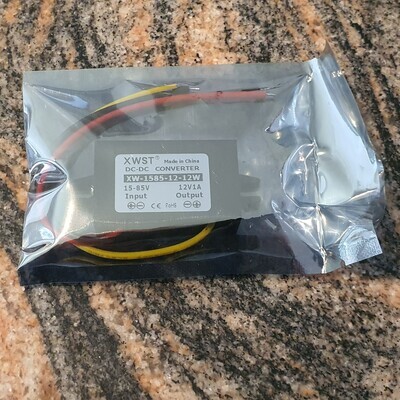
12V 1A (12w) Buck Converter (15-85v input)
12V 1A (12w) Buck Converter (15-85v input)
Extreme low profile.
AU$16.36
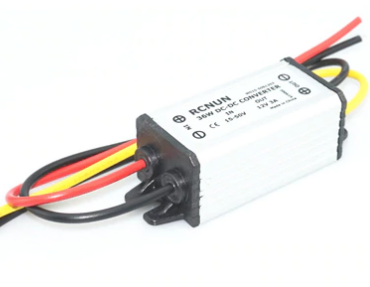
12V 3A (36w) Buck Converter (15-80v input)
12V 3A (36w) Buck Converter (15-80v input)
Near square side profile.
AU$17.27

12V 10A (120w) Buck Converter (30-90v input)
12V 10A (120w) Buck Converter (30-90v input)
High input voltage support to suit higher voltage systems with regenerative braking.
AU$34.55
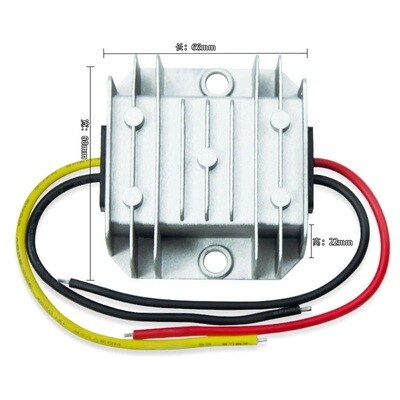
12V 3A (36w) Buck Converter (30-90v input)
12V 3A (36w) Buck Converter (30-90v input)
Voltage regulator with impressive thermal management to power 12 volt accessories from eScooter battery.
AU$34.55
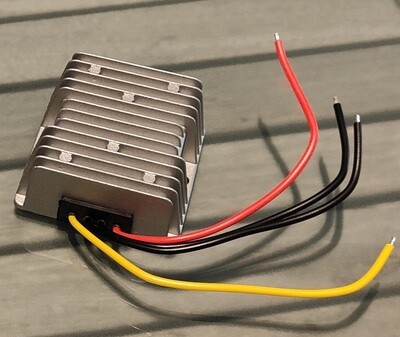
12V 10A (120w) Buck Converter (50-90v input)
12V 10A (120w) Buck Converter (50-90v input)
Voltage regulator to power high current 12 volt accessories from eScooter battery.
AU$38.18
Display prices in:AUD


